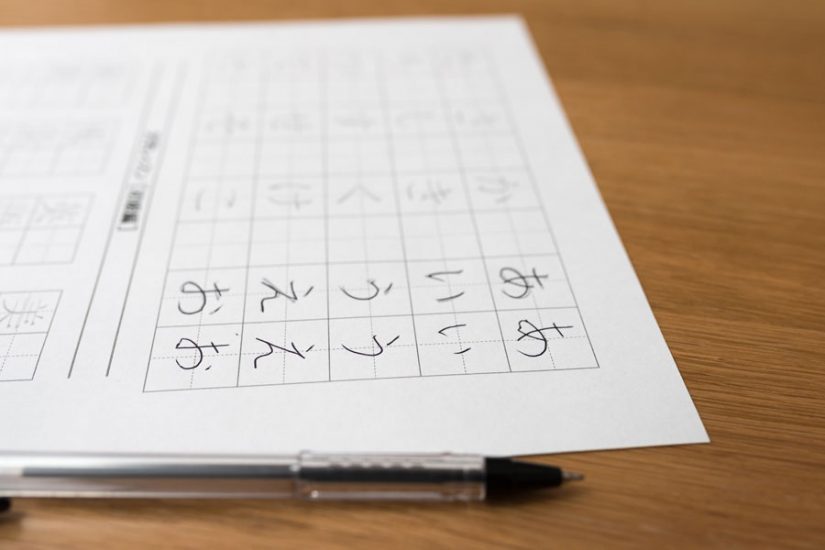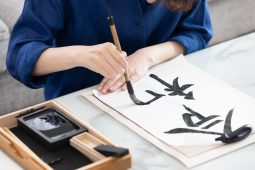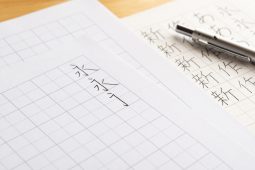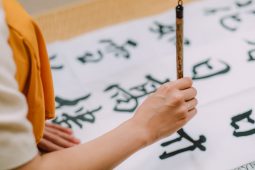As you probably know, Japanese has three alphabets: Hiragana, katakana, and kanji. You’re going to need all three of those; something I’m specifying mostly because I’ve met people who insist that just one will do, and you should pick kanji because then you know Chinese too (no, it’s not the same, and ‘I’ve been to Korea’ just makes things worse).
Today, we’re going to be looking at hiragana a bit, digging up some history and interesting facts.
It has a few uses in Japanese: Anything you’re not using kanji for, okurigana (little suffixes to kanji), furigana (optional reading guides written over kanji, like subtitles), and just plain simplified writing when, for example, you don’t want to throw complicated kanji at children. It also has some use as a deliberate stylistic choice, which we’ll go into later.
It has its start at a similar period to katakana, in the late 8th century and on. Kanji was Japan’s first alphabet, and it was an imported one from a language that worked quite differently. This resulted in Man’yogana, a selection of kanji that had no meaning in Japanese and were used only for phonetic purposes. This is, as you can probably imagine, horribly annoying, but somehow it took people about five centuries to think about improving on it.
The principle in both cases was to take part of the Man’yogana kanji, and then simplify it. For example, 加 became か and カ respectively in hiragana and katakana. Katakana was a more blocky style, closer to the original kanji, and used by Buddhist monks as a supplement to the kanji in their complex prayers. Hiragana was written by women in a cursive style, supposedly to be easier to write (though I always thought the letters were more complex than katakana if anything), and was used as the entire script rather than how it’s used today. It went through some changes over the years, and only received its final codification in the 1940 s; you can still find some letters that aren’t used in modern hiragana, such as ゐ and ゑ (pronounced, respectively, something like ‘wi’ and ‘weh’).
As a result of how they started out, hiragana and katakana were respectively known as ‘onnade’ and ‘otokode’ (or “woman’s/man’s writing”).
Its use in modern day changed the association for katakana so it’s more linked with loanwords and foreign languages, but hiragana retains a vague feminine or ‘softer’ association many centuries later. Honestly, I’m a little surprised it stuck.
In the past, hiragana found heavy use in court correspondence between women, and some say this helped it to act as a kind of cipher that men in the court couldn’t read. If this is true, it probably didn’t last; hiragana soon became the language of choice for private letters, and then literature, while katakana was used in temples and official records. Many novels of the time, of which the Tale of Genji might be most famous, are written entirely in hiragana; something which probably makes them much longer, and honestly a bit of a pain to read today if you don’t have a problem with kanji in the first place.
Today, hiragana sees four slightly less orthodox uses.
- One is to write everything (or nearly everything) in hiragana if the material is meant for young children.
- Another, in fiction, is to write anything said by younger characters (or anyone with less of a grasp of Japanese — though if the character is not Japanese, katakana is often used for this) entirely in hiragana.
- The most common ones, though, are names and branding. Quite often, businesses will name their store entirely in hiragana, or have a kanji or katakana name as well but write their signs in hiragana: This is usually done to provide a ‘softer’ or more approachable image. It probably helps that hiragana is the most rounded of the three alphabets, too. Occasionally you will see all-hiragana names on election posters for similar reasons.
- Place names, meanwhile, have their own reasons. There are actually many places that use ateji (phenomenon similar to man’yōgana) for their names: That is, their name predates kanji in Japan, and so they apply kanji ignoring the meaning, for solely phonetic purposes (a kind of successor to Manyo’gana).
Some places don’t bother with that, and that’s how you get names either always, or preferentially written in hiragana rather than the standard kanji of city names. The one outlier is if a place name isn’t originally in Japanese at all (the Ainu language, for instance), but then you’ll usually see it as katakana in Japanese.
That’s all for hiragana; next time, we’ll dig into katakana, and all its ties with foreign languages, loanwords and stylisation!








